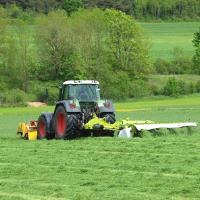(BRUSSELS) – The maximum aid Member States can give to their farmers without need for prior EU approval will rise from EUR 15,000 to EUR 25,000, the Commission announced Friday, to allow greater flexibility, especially in times of crisis.
The decision, says the EU executive, will allow EU countries to increase support for farmers without distorting the market, while reducing the administrative burden for national authorities.
“The Commission’s proposal for new state aid rules for the agricultural sector reflects the value of this form of support in times of crisis,.” said Farm Commissioner Phil Hogan: “By increasing the maximum aid amount to farmers, national authorities will have more flexibility and be able to react more quickly and more effectively to support vulnerable farmers. In some cases, the amount of State aid that can be provided to individual farmers will be increased by 66%. These new rules will continue to accompany the normal rules for notified State aid, which Member States may continue to apply.”
The maximum aid amount that can be distributed per farm over three years will rise from 15,000 to 20,000. In order to avoid any potential distortion of competition, each EU country has a maximum national amount which they cannot exceed. Each national ceiling will be set at 1.25% of the country’s annual agricultural output over the same three-year period (up from 1% in the current rules). This is an increase in the national ceiling of 25%.
If a country does not spend more than 50% of its total national aid envelope on one particular agricultural sector, it may increase even further the de minimis aid per farm to 25,000, and the national maximum to 1.5% of the annual output. This represents a 66% increase in the ceiling per farmer and a 50% increase in the national ceiling.
For countries that do opt for that highest ceiling, the new rules require the creation of mandatory central registers at national level. This will allow keeping track of the aids granted in order to simplify and improve the delivery and monitoring of the so-called de minimis aid. Several Member States already maintain such registers, which will allow them to apply the higher ceilings immediately.
The increased ceilings come into force on 14 March and can apply retroactively to aids fulfilling all the conditions.
EU state aid rules state that EU countries need to state aid to the Commission and cannot implement the aid measure until authorised. However, when the aid amounts are small enough, which is the case for the de minimis aid, there is no need for the authorisation. Due to their size, such aid is not seen as a threat to competition and trade in the internal market.
The de minimis aid is typically used by Member States when they need to act quickly without setting up a scheme in accordance with state aid rules, notably in times of crisis. It is also commonly used for very specific purpose, for example to help prevent or eradicate animal diseases as soon as an outbreak occurs, or to compensate farmers for damages caused by animals that are not protected under EU or national law such as wild boars. The damages caused by protected species of animals (wolves, lynx, bears, etc) can be compensated under notified state aid rules.
State aid in the agricultural and forestry sectors and in rural areas



